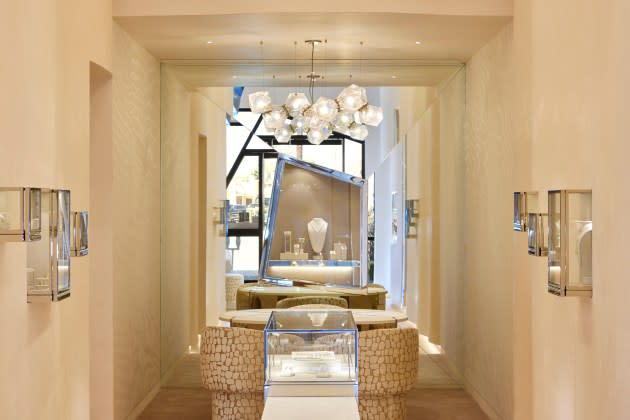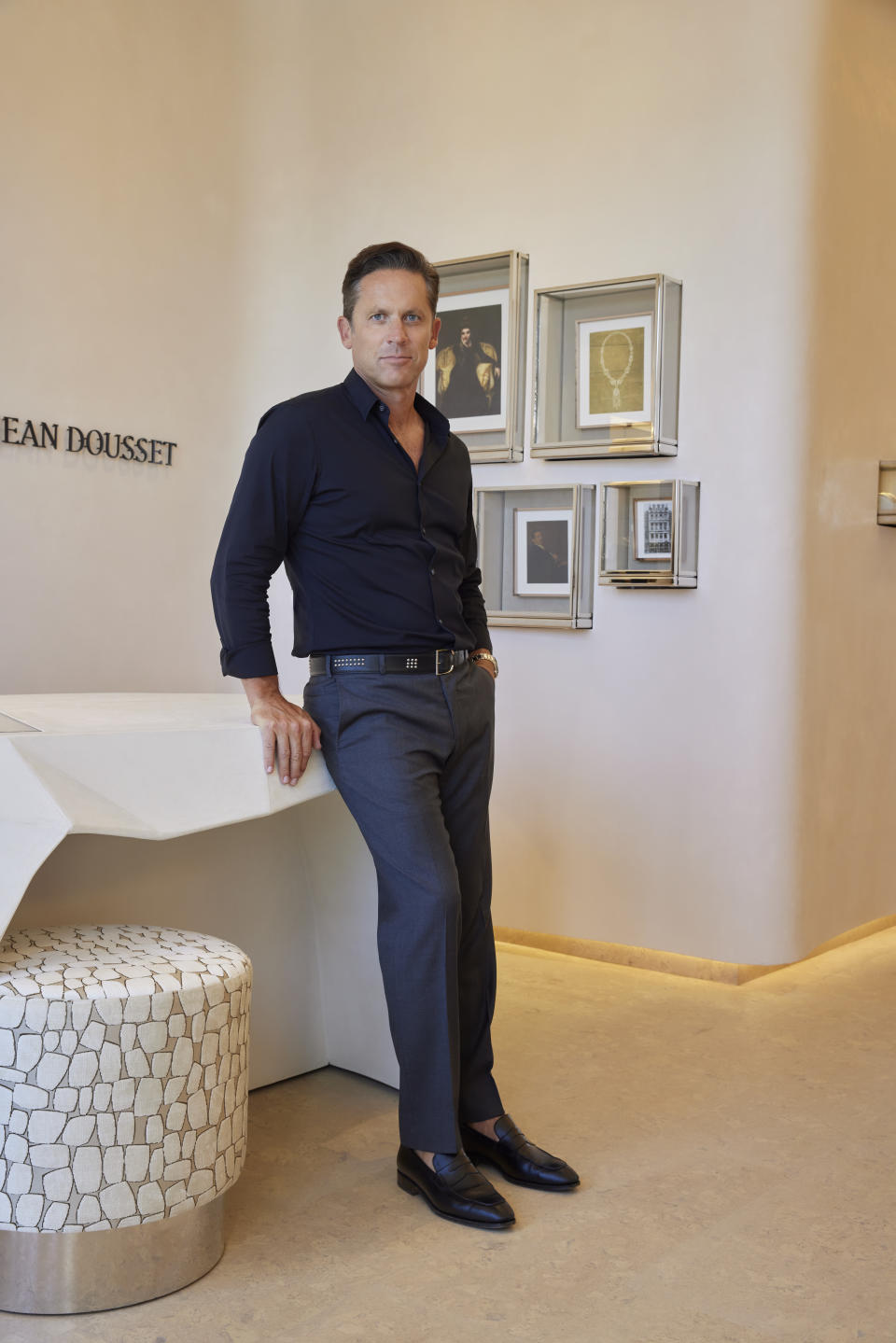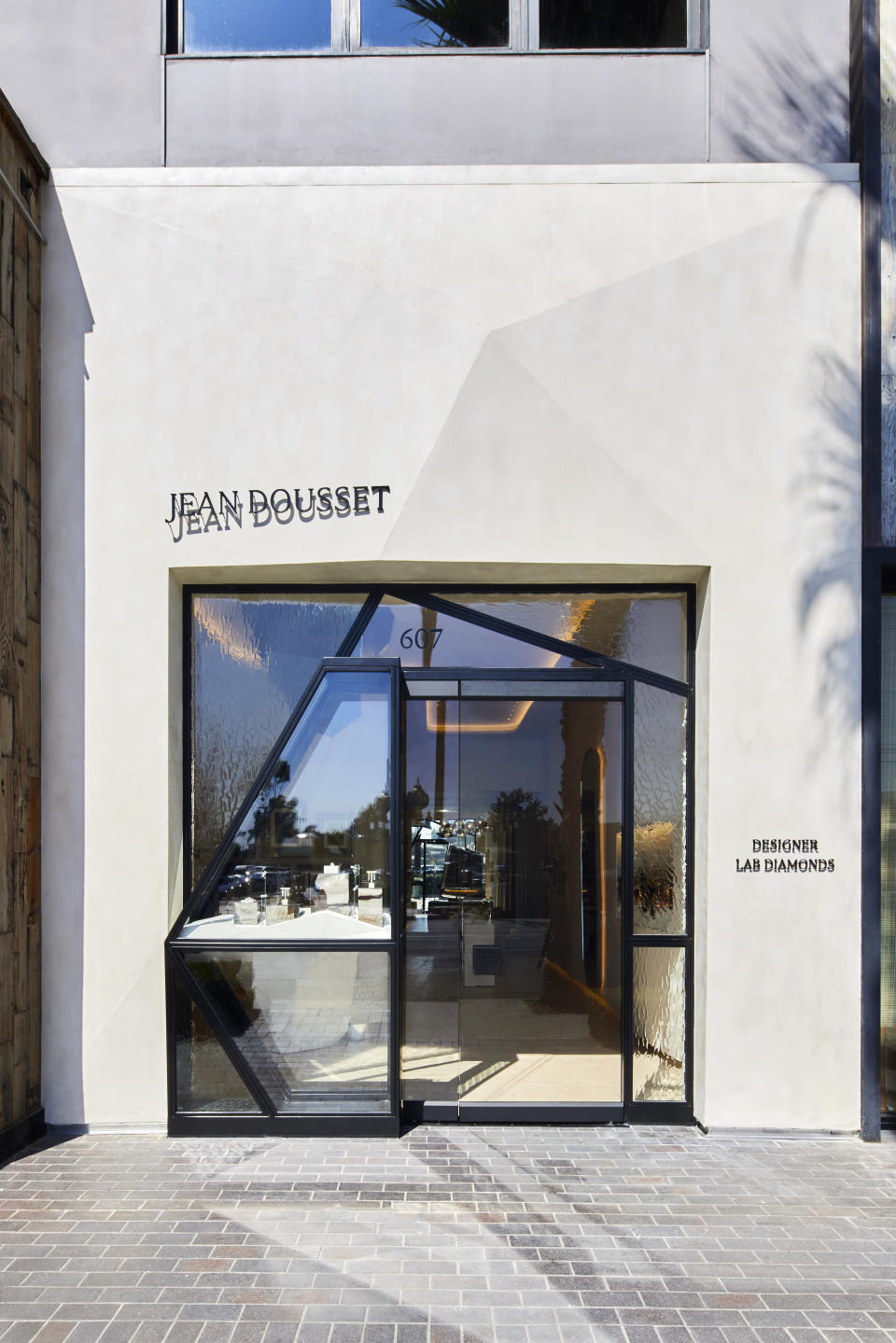L.A. Jewelry Designer Jean Dousset, Creator of Paris Hilton’s Engagement Ring, Pivots to Lab-grown Diamonds
- Oops!Something went wrong.Please try again later.

Jean Dousset knows a thing or two about diamonds. Two years ago, the Los Angeles resident designed Paris Hilton’s engagement ring. He’s also designed engagement rings for actors Eva Longoria and Amy Adams.
He launched his career 30 years ago working in Paris for luxury brands including Chaumet, Boucheron and Van Cleef & Arpels. And his great-great grandfather was Louis-François Cartier, the founder of the Cartier brand of fine jewelry and watches launched in 1847.
More from WWD
For years, his eye-popping engagement rings were fashioned out of natural diamonds. But in a twist from his Cartier past, the jewelry designer is forgoing natural diamonds and making his entire collection out of lab-grown diamonds.
With this new business model, Dousset recently opened his first self-named flagship at 607 North La Cienega Boulevard in West Hollywood. Customers can make an appointment or wander in to the 600-square-foot space to view his expanded selections of lab-grown diamond jewelry that includes tennis bracelets, riviera necklaces and dangle earrings.
This is a big turnaround from 10 years ago when Dousset, who has lived in Southern California for the past 20 years, started his owned diamond jewelry brand that did a brisk business in engagement rings and other pieces made of natural diamonds sold from his nearby Melrose Avenue showroom, which has since closed.

Then things changed. A few years ago, Dousset was approached by some companies that create lab-grown diamonds costing considerably less than natural diamonds. The lab diamonds made of 100 percent carbon, just like natural diamonds, have the same quality, clarity and color as natural diamonds and are certified by the Gemological Institute of America, the industry standard for diamond grading, if they weigh more than 1 carat. “When the GIA starting rating lab-grown diamonds, that put them on par with natural diamonds,” Dousset said.
For years, Dousset was concerned about how the high cost of diamonds was affecting his customers’ jewelry selections. “There was a lot of tension and compromise that was being made at a moment that should have been free, joyful and liberating. And that’s where lab-grown diamonds come in. They reset the scale,” the French jewelry designer said. “It gives people the opportunity to purchase not the biggest diamond ever, but to purchase exactly what they would like to wear. Lab-grown diamonds open all these doors.”
So, Dousset decided in April to completely switch his business model and use only lab-grown diamonds for his jewelry collections, leaving natural diamonds behind. “I thought, ‘What is the luxury affluent customer going to think about lab-grown diamonds?’ They love it,” he said.
The price differential is sizable. For example, a natural-diamond engagement ring that costs $50,000 can be acquired for $8,000 using a lab-grown diamond. A necklace linked all around with natural diamonds that would sell for as much as $500,000 now can be purchased for $90,000 when using lab-grown diamonds.
“When you cut natural diamonds, you have to cut them from a rough diamond,” Dousset explained. “The rough diamond does not always offer you the maximum opportunity for beauty because the rough is so rare and expensive. That makes you look at a stone for how much it can weigh, not necessarily how pretty it is cut. You choose yield and value over beauty. With lab-grown diamonds, they are grown in a cube, and we can decide what we cut from it with only one concern in mind. Beauty.”

Lab-grown diamonds can also counter the rising cost of natural diamonds governed by supply and demand and are conflict-free. Many jewelers are expecting the cost of natural diamonds to rise because Russia is by far the largest diamond producer by volume in the world. It produces nearly twice as much as Botswana, the number-two diamond producer.
Last spring, the Biden administration banned the import of rough diamonds from Russia into the United States, the largest global diamond buyer, to make sure those revenues did not financially benefit that country at war with Ukraine. The U.S. Treasury Department also placed sanctions on Alrosa, the state-owned company in Russia mining almost one-third of all diamonds produced in 2021.
Earlier this year, Britain announced a complete ban on all Russian diamonds. And now the Group of 7, which includes Britain, Canada, France, Germany, Italy, Japan and the United States, and the European bloc, could prohibit the import of all gemstones mined in Russia, including those cut and polished in other countries. Ninety percent of diamonds are cut and polished in India and often classified as Indian gems.
With the threat of so many Russian sanctions, the future looks bright for lab-grown diamonds, produced mostly in China, followed by India and the United States.
“I have never felt so sure about pivoting and rebranding as a lab-grown diamond brand,” Dousset said. “It is not only the right decision, but the future of diamonds.”
.
Best of WWD

